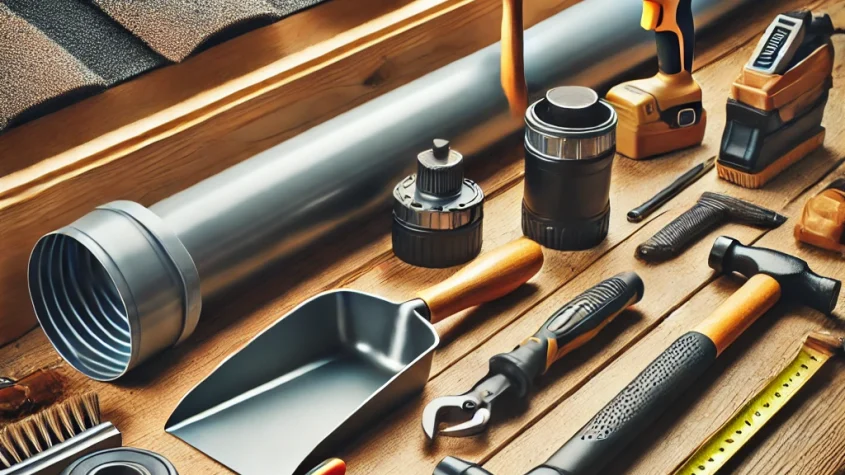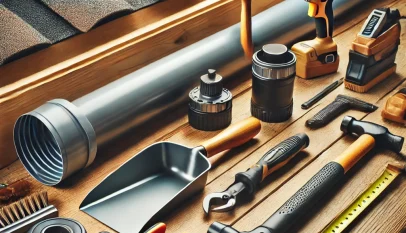
Choosing the right roofing tools and accessories is essential for anyone undertaking roofing projects. From basic hand tools to more advanced equipment, having the right tools can significantly impact the efficiency and quality of the work done. Investing in high-quality roofing tools ensures that the job is completed safely, accurately, and with a professional finish.
Roofing tasks require precision and durability, which is why understanding the variety of tools available is crucial. Items like roofing nailers, safety harnesses, and utility knives each play a vital role in ensuring the job runs smoothly. Equip yourself with the right accessories, and it can save time and energy.
Whether a seasoned contractor or a DIY enthusiast, knowledge about roofing tools and accessories can enhance performance and safety on the job site. Exploring the best options available will provide insights into how to achieve a secure and lasting roof.
Essential Roofing Tools
Roofing projects require a variety of specific tools designed to ensure safety, precision, and efficiency. Different categories of tools serve distinct purposes, from essential safety gear to specialized cutting implements.
Safety Equipment
Safety equipment is critical in roofing to minimize the risk of accidents. Essential items include hard hats, safety glasses, and gloves. Hard hats protect against falling debris, while safety glasses shield the eyes from dust and small particles.
High-quality work gloves provide grip and protection from sharp materials. Non-slip footwear is important for stability on sloped surfaces. Additionally, harnesses and safety lanyards prevent falls from heights, ensuring workers remain secure while on the roof. Proper safety gear is not optional; it’s a necessity in roofing work.
Measuring Tools
Measuring tools are integral to ensuring accuracy in any roofing project. A standard 25-foot tape measure is often sufficient for most residential jobs. Additionally, laser levels provide precision when aligning roof structures.
Roof squares help in checking for right angles and measuring shingles, while chalk lines assist in marking straight edges for roofing materials. Digital measuring tools, like electronic distance measurers, offer advanced options for larger or more complex roofs. A quality measuring toolset improves efficiency and reduces waste.
Roofing Hammers and Nail Guns
Roofing hammers and nail guns play a vital role in securing shingles effectively. Roofing hammers feature a weighted head for driving nails and a claw for removing them, making them versatile hand tools.
Nail guns, on the other hand, increase speed and efficiency, driving nails with consistent power. Choosing between pneumatic and cordless nail guns depends on the project’s needs. Pneumatic models require an air compressor, while cordless versions offer mobility but may be heavier. Both tools are essential for quick and secure fastening.
Utility Knives and Roofing Cutters
Utility knives and roofing cutters are essential for precise cuts in roofing materials. Utility knives provide flexibility for cutting various materials, from shingles to tar paper. They should have replaceable blades to maintain sharpness.
Roofing cutters are specially designed for working with shingles. These cutters typically feature long blades for straight cuts and may have ergonomic handles for reducing hand fatigue. Ensuring that cutting tools are sharp and reliable impacts the overall quality of the roof installation process.
Sealant Dispensing Tools
Sealant dispensing tools are crucial for waterproofing and sealing joints on a roof. Caulking guns are commonly used to apply sealants and adhesives, ensuring a consistent bead for effective sealing. They come in manual and pneumatic varieties, with pneumatic options providing ease of use for larger projects.
For specific applications, squeeze tubes or spray applicators may be used, especially for adhesive. Ensuring that sealants are correctly applied prevents leaks and prolongs roof longevity. Quality in sealant tools translates directly to the reliability of the roofing system.
Roofing Accessories
Roofing accessories play a crucial role in ensuring the integrity and performance of a roofing system. These elements include flashing, underlayment materials, fasteners, and roofing tiles or shingles. Each component contributes to durability, weather resistance, and overall efficiency.
Flashing and Vents
Flashing is vital for directing water away from critical areas on a roof. Typically made from metals like aluminum or copper, it seals joints and prevents leaks. Proper installation of flashing around chimneys, vents, and valleys is essential for long-term roof health.
Vents, including ridge and soffit types, promote ventilation within the attic space. They help control moisture, reducing the risk of mold and extending the life of roofing materials. Quality venting systems are essential for energy efficiency and comfort in a building.
Underlayment Materials
Underlayment serves as an additional layer between the roofing material and the deck. Common types include felt paper and synthetic membranes. It offers protection against moisture intrusion and enhances the roof’s insulation properties.
Choosing the right underlayment depends on the roofing material and local climate. It can also provide extra support and protection when installed correctly. This layer is especially important in areas prone to heavy rain or snow.
Roofing Fasteners and Adhesives
Roofing fasteners are essential for securing shingles and tiles to the roof deck. Common types include nails and screws, with specific designs for different roofing materials. Ensuring proper fastener selection and installation is critical for maintaining wind resistance and overall system integrity.
Adhesives can complement mechanical fasteners. They provide additional bonding strength, especially in high-wind areas. Some products are specially formulated for specific materials, and using the right adhesive can enhance durability.
Roofing Tiles and Shingles
Roofing tiles and shingles come in various materials, including asphalt, wood, clay, and metal. Asphalt shingles are popular due to their cost-effectiveness and ease of installation. They provide reliable protection and come in numerous styles and colors.
Tiles and metal roofing systems offer increased durability and longevity. While generally higher in initial cost, they may require fewer repairs over time. Selecting appropriate roofing materials is influenced by climate, aesthetic preferences, and building codes.
Bathroom Renovation Hamilton: Transforming Your Space with Expert Solutions
Bathroom renovations in Hamilton can significantly enhance both the functionality and aest…








